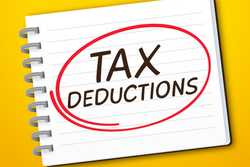VantageScore vs. FICO

Our evaluations and opinions are not influenced by our advertising relationships, but we may earn a commission from our partners’ links. This content is created by TIME Stamped, under TIME’s direction and produced in accordance with TIME’s editorial guidelines and overseen by TIME’s editorial staff. Learn more about it.
Checking your credit score can yield dozens of different results depending on the method you use, and that can be confusing if you want to know exactly where you stand on any given day. However, it's crucial to know you have and always will have multiple credit scores due to the way these scores are determined. Not only are there multiple credit bureaus assigning credit scores, but there are many types of credit scores and several credit-scoring models used to create them.
VantageScore and FICO are the two major credit-scoring models in use today. Knowing how they work makes it easier to understand why credit scores can be different. These two scoring models are very similar in some ways, including the range of scores they use. However, there are myriad ways VantageScore and FICO are unique, which we'll explain in detail below.
Free to $39.95 per month
| Characteristic | VantageScore | FICO |
|---|---|---|
Who created it? | Developed by the three credit bureaus | Developed by the Fair Isaac Corporation |
Minimum scoring requirements | Any account | Six months of credit history |
Credit score range | 300 to 850 with newest models | 300 to 850 |
Number of factors to determine scores | 6 | 5 |
Complies with the Equal Credit Opportunity Act (ECOA) | Yes | Yes |
Most important factor | Payment history | Payment history |
Offers industry-specific scores | No | Yes |
While VantageScore and FICO do things slightly differently, checking either of these credit scores can help you assess your credit health. In fact, both types of scores are immensely useful when you're trying to build credit so you can qualify for a mortgage, an auto loan, or other financing with the best rates and terms.
Other major similarities between these scoring models include the range of scores each one offers, the basic factors each model uses to create scores, and compliance with the Equal Credit Opportunity Act (ECOA).
Older versions of VantageScore assigned credit scores with unique numerical values (501 to 990). But today both FICO and VantageScore use the same general range of credit scores (300 to 850). While the two scoring models use slightly different point values to determine who has great credit, good credit, and poor credit, both consider higher scores to be an indicator of better credit. Meanwhile, credit scores on the low end of either credit score range are considered "poor" or "very poor," depending on the scoring model.
While FICO uses five main factors to determine a person's credit score—and the latest VantageScore models use six different factors—the factors are very similar. For example, both FICO and VantageScore (VantageScore 3.0 and 4.0 models) consider your payment history, how much debt you owe, your recent credit, and your credit utilization in some way to help credit bureaus determine where your score falls on the scale.
Also note that, with both credit scoring models, the information in your credit reports is used to determine your scores and nothing else. The chart below shows how each scoring model uses the factors in your credit reports to help the credit bureaus assess creditworthiness.
| VantageScore 4.0 | FICO |
|---|---|
|
|
The Equal Credit Opportunity Act (ECOA) is a federal law that makes it illegal for creditors to deny credit to or discriminate against individual borrowers based on race, color, religion, national origin, sex, marital status, or age. Meanwhile, credit cannot be denied based on someone receiving public assistance or exercising any rights afforded under the Consumer Credit Protection Act.
Both VantageScore and FICO were designed with the Equal Credit Opportunity Act (ECOA) in mind. They help lenders and other companies assess creditworthiness without any consideration of these factors.
VantageScore and FICO share the same objective—helping lenders evaluate the creditworthiness of a borrower. Both scoring models do this by assigning consumers a credit score within a specific range and by outlining where individual scores fall on the spectrum from "poor" or "very poor" to exceptional or excellent.
Of course, credit scores are used for more than loans. For example, credit scores can be used by insurance firms to assess risk and set rates for individual customers, and they can be used to qualify applicants for a rental agreement and other types of accounts.
While VantageScore and FICO have the same purpose and work the same way in many respects, there are also key differences. For example, how each company came to fruition is a unique story, and these two models have different minimum credit score criteria and different score values.
What's interesting about VantageScore is that it was created by the three consumer credit bureaus—Experian, Equifax, and TransUnion—in 2006. According to a press kit from the company, VantageScore uses a patent-pending scoring methodology "to provide lenders and consumers with more consistent credit scores across all three major credit reporting companies and the ability to score more people."
In other words, the three credit bureaus got together to build a credit scoring model to compete with FICO and potentially offer scores to more consumers overall.
Meanwhile, the Fair Isaac Corporation (FICO) was founded in 1956 by Bill Fair and Earl Isaac, an engineer and a mathematician. The two worked together to envision and build a credit-scoring system that made sense for consumers at the time. The modern version of the FICO scores we use today weren't introduced until 1989.
Minimum credit score criteria is a factor that led to the creation of VantageScore. It's easy to see why. Essentially, having a FICO score at all requires consumers to have at least six months of credit activity on their credit reports, with at least one account open and reporting to at least one of the credit bureaus. Until that happens, consumers can’t be assigned a FICO credit score.
VantageScore sought to solve this issue by removing this barrier and assigning consumers a credit score earlier on in their journey to building credit. With VantageScore, you can have a credit score assigned as soon as you have a single account reported to any of the credit bureaus.
Both FICO and VantageScore assign five different credit score rankings based on where a consumer's credit score falls on the scale. However, their rankings are somewhat unique, which is why your credit score can be considered "good" with one credit scoring model and fair with another at the same time.
For example, a credit score of 660 is considered a "good" VantageScore, yet the same FICO score is considered "fair."
Because VantageScore was created by the three credit bureaus, it uses a tri-bureau model that works with a credit report from any of the three credit bureaus. Meanwhile, FICO creates and uses a credit-scoring model that is unique for each of the credit bureaus.
This is information most consumers would never need to know or care about. It does show another reason that consumers can have multiple different credit scores from different sources at any given time.
Also know that, unlike FICO, VantageScore does not facilitate industry-specific credit scores. For example, FICO offers auto industry credit scores such as the FICO® Auto Score 9 for lenders issuing auto loans,. There is no VantageScore equivalent.
Do you have a good credit score or a not-so-great score? That really depends on the credit-scoring model being used at the time. This is another area where VantageScore and FICO diverge since they each use their own scoring system to label scores from good to bad.
If you have checked your credit score, and you're wondering where it falls on the spectrum, the scoring ranges below can help:
FICO credit scores:
VantageScore:
While VantageScore and FICO do some things differently in their efforts to help credit bureaus assign consumer credit scores, the path to building good credit is the same with either one. For example, making on-time bill payments is the most important step you can take to build good credit no matter which scoring model is being used. From there, moves like keeping debt levels low, not opening too many accounts at once, and building a lengthy credit history over time will move the needle. In the meantime, monitoring your credit with myFICO can help you get a handle on your scores and track your credit progress over time.
Free to $39.95 per month
All the same, it's helpful to know why your credit score might be totally different from one day to the next. You may be looking at different scores altogether, which may not matter in the long run. What does matter is keeping your end goal in mind—using credit responsibly so you can have the best score possible with any scoring system.
While VantageScore is commonly used to assess consumer creditworthiness, FICO scores are the most popular and are used by 90% of top lenders to make credit decisions.
Because both credit scoring models strive to help lenders assess risk based on information in your credit reports and use similar factors to do so, neither is always more accurate than the other.
You don't need to track all your credit scores and trying to do so would be practically impossible. If you want to focus on one score specifically, the fact FICO scores are used by 90% of top lenders make this score your best bet.
Your FICO score can be different from your VantageScore for myriad reasons. For example, FICO and VantageScore weigh each of the credit factors they use slightly differently when determining scores.
FICO scores can be higher than VantageScore credit scores in some scenarios, but this isn't always the case. Generally speaking, the only credit score that matters at the moment is the one you or a lender is checking in order to make a credit-related decision.
Banks use both VantageScore and FICO scores. However, FICO scores are most popular and more likely to be used overall.
The information presented here is created by TIME Stamped and overseen by TIME editorial staff. To learn more, see our About Us page.




